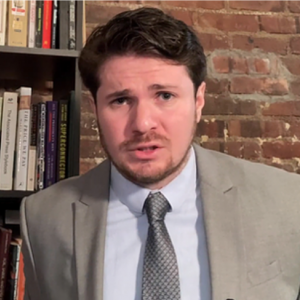By establishing independent revenue streams freelancers can gain more control over their situation. While regular clients and an anchor gig can offer some level of reliability, independent streams of revenue, such as paid newsletters, podcasts and video products that complement your work can operate as a financial safety net.
These are great to have especially during slow periods in your work. These might be at the end of a quarter or during the holiday season. Or as unfortunately became all too common during the pandemic, as some outlets put commissioning freezes in place while others laid off staff or shut down completely.
How exactly do you establish these independent streams of revenue? How do you develop these products for long term success? Here’s some advice.
Strategically plan content and build consistency
Whether your independent product is a newsletter, video series, podcast or some combination of the three, consistency is key. When things are hectic with clients and you have deadlines to meet, dedicating time to this can be difficult. In these situations, creating evergreen content pegged to a holiday or a recurring event can be an effective strategy.
Scheduling stories to publish alongside a holiday or a recurring event can help ensure you have content that will be relevant, and that you can have prepared for release over the course of the year. This might mean a story about the commoditization of Valentine’s Day that you publish in mid-February, for instance, or maybe a think piece about how milk should not be a standalone beverage ahead of an obscure fun holiday like National Milk Day. Having these lined up is a great way to build consistency.
[Read more: How to make your freelance reporting sustainable]
Lauren Strayhorn, founder and editor-in-chief of Notedd, a newsletter for women of color by women of color, has content in the pipeline pegged to certain events for the rest of the year. “This month [May] is focused on beauty, but there are obviously opportunities to think about Mental Health Awareness Month or Asian Pacific Heritage Month. Next month, we're focused on racial justice with Juneteenth coming up,” Strayhorn said.
Building consistency is key because regular and engaging content leads to subscribers; consistency helps foster a loyal audience and some of these readers, listeners or viewers will gladly invest in a monthly subscription. According to the newsletter platform, Substack, converting 10% of your free subscribers into paid subscribers is a good rate. Consistency will help facilitate these conversions.
Your product should also have some kind of utility that fills a need. Consider adding a unique twist on a conversation, offering a sense of community, or providing something more tangible, like access to job listings and exclusive opportunities.
Britany Robinson, author of the One More Question newsletter has found success this way. Geared toward freelance writers, Robinson often includes various calls for pitches and grant opportunities that she distributes as part of her newsletter. This offers a specific utility to her readers.
Apply for grants and submit funding proposals
Slow periods are also a great time to put together a book or grant proposal. Both can require quite a bit of upfront work with no guaranteed payoff. “It is always a gamble on your time. I try to have those [deadlines] in the calendar so that I can work on them when I don’t have an immediate assignment or deadline,” said Robinson. “As you start working on those you become faster and faster because you can repurpose cover letters and those go-to referrals from editors.”
Book proposals, in particular, can require some chapters upfront and unfortunately this isn't always fruitful. However, even if it doesn’t work out, it can give you story ideas for the future. In some cases you can even repurpose the content for your newsletter, podcast or video product. In short, the upfront preparation doesn’t have to go to waste.
[Read more: How online communities are striving to be more inclusive]
Identify speaking opportunities
A great way to stand out from the crowd as a freelancer is to be frequently sourced as an authoritative voice on a subject, for instance as a guest commentator on a TV show or radio program, a panelist at an event, or a moderator on a panel. Your slow periods are a good time to develop one-pagers that outline your areas of expertise, set your rates, find events to reach out to, and put together a reel of samples to distribute if needed.
Your slow periods are a good time to set up coaching practices — career coaching for example — or consultancy operations that you may conduct on the side throughout the year.
Know your worth on this. Personally, I typically don’t moderate panels for free, unless it’s for a session I have a more personal connection to, like a college alumni event.
As a media professional, presentations or speeches on your beat of expertise is part of your content creation repertoire. I recently turned down an opportunity to moderate an event hosted by a financial services company because they offered no pay. While I would have been excited to moderate, I highly recommend not setting that standard for yourself.
This should not be confused with representing print or digital reporting on external radio or TV programs, or as a panelist at an event. Those are different and part of pushing your existing work, similar to promoting on social media.
Your slow periods don’t have to stay that way. They can be opportunities for you to set up long-term success for your reporting portfolio, and to maintain some passive income when things are running smoothly once more.
Andy Hirschfeld is a New York City-based reporter focusing on cost of living issues. He writes for publications including Al Jazeera English, Observer, OZY, Salon, CNBC and many others. He’s also the anchor for the nationally syndicated business news program Business Brief.
Photo by Ketut Subiyanto from Pexels.


